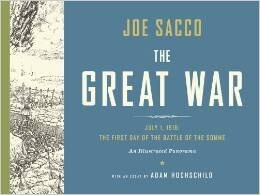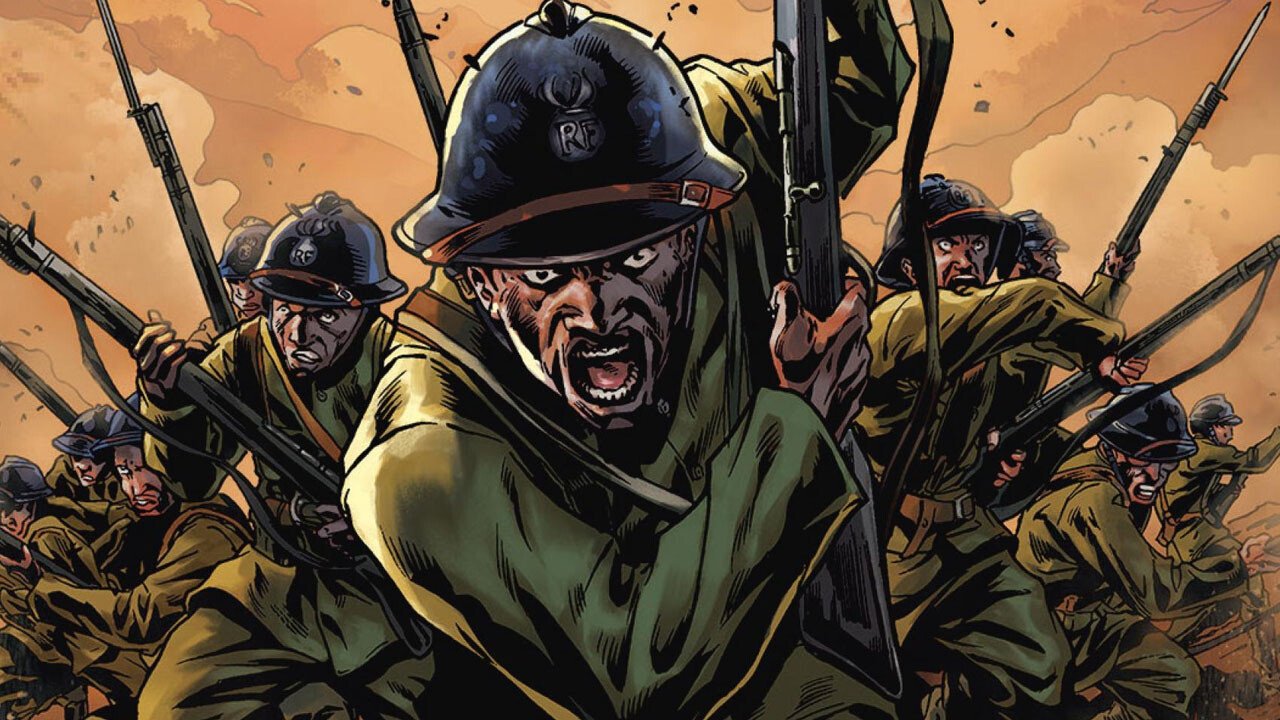This June, one hundred years ago, a Serbian nationalist walked out of a café and fired several rounds into an Austrian duke. What followed was the bloodiest conflict Europe, and the world, had ever seen, and would define global politics for the next century. Unfortunately, we have very little footage of these gruesome and hellacious battles, and even photographs are surprisingly rare.
Reading about the war is one thing, but as primarily visual creatures, seeing a graphical representation of the horrors of those apocalyptic four years affects us on a whole other level, and this is an avenue where the graphic novel format shines. This event often gets overshadowed by the little known conflict that followed 20 years later, so it’s refreshing to see many artists and writers taking their passion for comic books to make sure the men who fought in died in this colossal tragedy get their due, “lest we forget.”
The First World War is treated with a reverence and horror like no other conflict in human history. The following are several books that all take different approaches to telling this tale, but do it in a manner that shows us how even one hundred years later, we can still be shocked and appalled by these events.
There are no vampire Nazis in these books. No secret army of super-powered Hitler clones or skull faced super villains seeking mythical weapons. The stories are all based on real events, real people and real accounts.
The Harlem Hellfighters
Max Brooks and Caanan White

Author Max Brooks is has been writing, acting, and doing voiceovers for years. The son of Hollywood legend Mel Brooks, Max is most famous for his Zombie Survival Guide and apocalyptic collection of stories World War Z. In his latest book, Brooks teamed up with artist and illustrator Caanan White to tell the tale of the 369
Infantry Regiment, a group of African-American soldiers who fought and kicked all sorts of ass in the first World War.
The book follows the outfit from the enlistment lines in New York to the bloody trenches of France in the beginning of 1918. Unlike other accounts from this period, the struggles of the 369
go well beyond the horrors of trench warfare. Combating extreme racial prejudice at home, especially so during their training at boot camp in South Carolina, Brooks shows the unbelievable strength and resolve it took for these men to fight, and die, for a country that didn’t want them in a war that wasn’t theirs.
The dialogue is fantastic, nearly every page has poignant and endlessly quotable lines that hit the reader right in the gut. En route to France in the belly of a transport ship, two of the soldiers are questioning the causes behind the colossal conflict they are about to join. When one soldier asks “How’d the whole war start,” another replies “White folks ran out of coloreds to kill, so they turned on each other.”
The art is very reminiscent of the Walking Dead. Simple black and white pages are splattered with plenty of gore, although at times it can be difficult to tell what is happening and distinguish individual characters. There is plenty of action and White does an excellent job of showing the awful conditions these men were forced to live in.
Whether your interest is in the history of war or race relations in early 20
century America, the Harlem Hellfighters is an excellent book and tells a very important, if oft forgotten story.
It Was the War of the Trenches
Jacques Tardi

This book is not a history text. The interweaving stories written and illustrated by Jacques Tardi are tales handed down to him from his Grandfather. That isn’t to say the book is rife with historical inaccuracies, quite the contrary. Tardi has done his research, from the uniforms to the signs in the trenches, it’s very clear the man knows his stuff. According to the introduction however, his main goal in creating this work was to avoid the specifics and dryness found in other texts because “The only thing that interests me is man and his suffering,”
The book tells a series of stories from intertwining perspectives, both French and German, that flow into a grand narrative showing just how ridiculously awful it was to fight this war. There is very little dialogue between characters, with each individual narrating his own experiences. With any translated work, one can’t help but feel some of the colour is lost with the original language, but regardless, the writing is strong and sucks you right in.
The art very rarely breaks the three panel per page format, in fact, only the first story is laid out in a different way. Don’t let this turn you off though, Tardi draws his pieces like a combination of old Tales From the Crypt comics and Tintin. The juxtaposition of cartoonish, almost goofy looking characters and rotting corpses, rats, and exploding limbs really makes the reader pay attention. Using only black and white is not a hindrance here, it’s almost as if colour would detract from the grim scenery and hopelessness the stories are trying to convey.
This book might not be for everyone, but if you’re looking for a spot on depiction of life in the trenches, you won’t find anything better in the graphic format.
Charley’s War
Pat Mills and Joe Colquhoun

The oldest series on this list, Charley’s War ran as a strip in Battle Picture Weekly from 1979-1985. Written by Pat Mills with art by Joe Colquhoun, the story follows the adventures of Charley Bourne, a British boy that lies about his age in order to enlist. Charley very quickly finds himself on the front lines at the Battle of the Somme, the bloodiest battle in British history where 20,000 British soldiers were killed on the first day.
While it can now be collected in several volumes, the original strip ran weekly and is broken up similarly within. The dialogue is defiantly British, with slang and colloquialisms that read like a script from an episode of Blackadder Goes Forth. It adds a charm and personality to the writing, but the pulpy nature doesn’t hit as hard as some of the other books in this list. Charley encounters plenty of memorable characters in his journeys, including the stoic and tattooed Sgt. Tozer and the nasty and narcissistic classist Lt. Snell.
Anybody who grew up reading comics from the silver age will love the art. The facial expressions on the characters convey amazing ranges of emotion, and the battle scenes are crammed with action and detail. There is plenty of dirt and blood, and when the tanks roll out for their first test run you can feel the rumble in your bones while reading.
Charley’s War is now split up into 10 volumes, and it’s easy to see why this series, according to comic legend Garth Ennis, is “the best story ever to appear in comics.”
The Great War: July 1, 1916: The First Day of the Battle of the Somme
Joe Sacco

This title is a bit different from the others. There are no words, no panels, and an astounding amount of detail. Joe Sacco has created a modern day Bayeux Tapestry that depicts the first day of the Battle of the Somme in a 24 page vista. A single piece spread out on twenty-four plates, picture Where’s Waldo meets trench warfare. Accompanied by a guidebook, it’s easy to spend hours poring over this astonishing work, soaking up the individual elements that come together in a beautiful and horrifying panorama. This work of art has garnered so much acclaim it is now featured as a 500-foot-long mural along the walls of the Montparnasse station of the Paris Metro.




